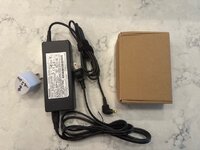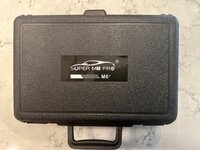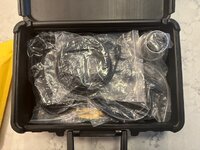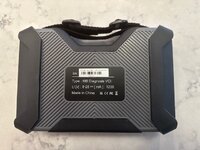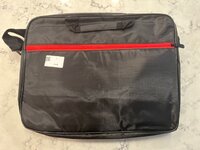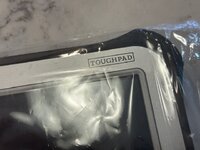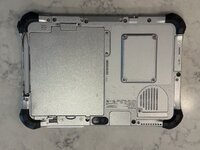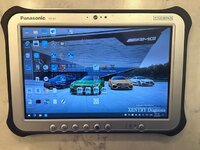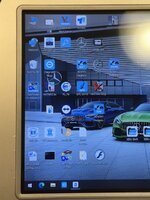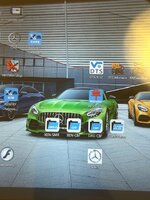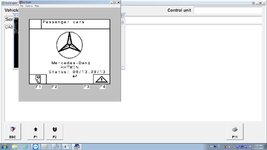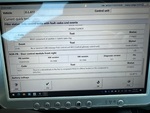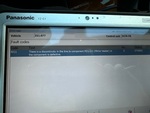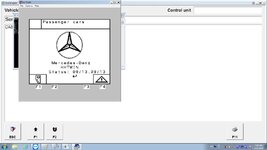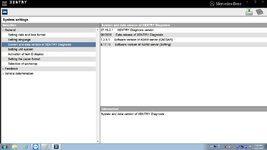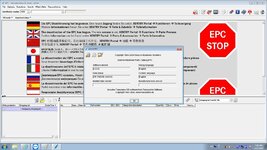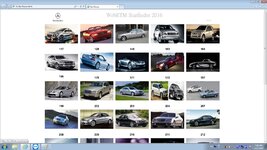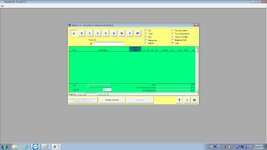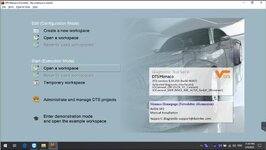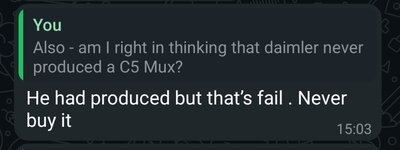This thread is intended to be an in-depth exploration of the new generation of the Chinese-made "Super MB Star M6+" diagnostic systems that came into production in the late 2023 period, and began being sold in early 2024.
Introduction
As discussed in recent (December 2024) posts in the “Exploring the C3” thread, there is a relatively new generation of MB diagnostic system that has been created by the Chinese, called the "Super Star M6+." This new diagnostic system was introduced around the end of 2023, or in early 2024.
I recently purchased and took delivery of one of these Super Star M6+ systems, and will use this thread to explore it in depth as I learn it and get to know it -- both for my 1994 E500 and for my more modern 2007 W211 E63 AMG.
Background and Context
The Chinese Super Star M6+ system is the successor to the Star C3 and C4 systems that have been sold over the past 10-15 years. Available from about the 2008 or 2009 time period, the Star C3 system was the original "hacked" version of the MB Star C3 ("Compact version 3") DAS system, and was followed sometime around 2015 or so with the Star C4 system. Literally the Chinese made direct physical clones/copies of the factory MB "Star" system multiplexer, with questionable but functional internal multiplexer electronics, and utilized "hacked" versions of the MB DAS, Xentry, WIS, EPC and other related software loaded onto hard drives and later directly onto serial-port-equipped laptop computers.
Early C3 systems ran in a Windows XP-based virtual machine running on top of Windows XP. Later C3 versions and the Star C4 ran directly on Windows XP, eliminating the virtual machine and its significant performance penalty. They contained all of the key MB software that was needed, including HHT-Win, DAS, Xentry, StarFinder, MediaDB, StarUtilities, and so forth.
MB first introduced the Star C4 system in early 2012. The C4's multiplexer was called "SDConnect." The Star C4 was a modest improvement over the C3, mainly adding a wireless interface between the multiplexer and the host computer (also retaining wired connectivity if desired), eliminating at least SOME of the cumbersome cabling that tended to get in the way when out in the shop working underhood.
Both the C3 and C4 systems had their quirks in many respects, particularly in regard to the reliability of connections, component quality, cabling quality, and software compatibility. The C3 and C4 system generally required an old-school Windows laptop (running Windows XP) that had an old-school SERIAL port -- something that many many computers haven't had for many many years (generally replaced by USB). And the Chinese-made multiplexers often had a limited life, and were fairly clunky and large. For the most part, these systems worked, but sometimes required some work to get them to interface with cars correctly. Furthermore, the HHT-Win emulation software was sometimes eliminated from some Star C4 systems in recent years, limiting the usefulness of the system for 1990s and very early 2000s cars that performed diagnostics and live data provision through the 38-pin round connector.
The C3 systems were gradually squeezed out of production by the C4, and have been largely unavailable for the past 2-3 years (except as used systems). If you search enough, you can find a few vendors who are still selling new C3 systems. We have linked below to one such vendor. The C4 systems are generally applicable for MB models from 1996 through 2022, with a few chassis exceptions in the latter years. The C4 generally is more reliable than the C3, supports more languages, supports more vehicles, and more protocols.
More recently, MB has introduced the Star C5 and C6 systems, which are designed to handle more modern cars. The C5 (also called "SDConnect" by MB) is functionally very similar to the C4, but its multiplexer design is much more robust and reliable and less prone to overheating. However, the C4 remains in very very broad use by folks like us, independent shops, and so forth. However, like the C3 before it, it is disappearing and becoming less available on the market.
The Chinese "clone" C5 systems that are available, are literally just C4 multiplexer innards that are put into a "cloned" MB C5 outer multiplexer case, and are functionally no different than a C4.
The official MB Star C6 systems multiplexer is common called "Xentry Diagnosis VCI" by the company. You can see photos below of all generations of the official MB multiplexers, from the C3 through the C6.
Reference photos of MB Star multiplexers:
Star C3 multiplexer:

Star C4 ("SDConnect") multiplexer:
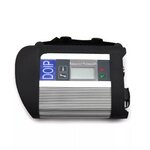
Star C5 ("SDConnect") multiplexer:

Star C6 multiplexer (aka "Xentry Diagnosis VCI"):


The Next Generation
This brings us to the advent of the Super Star M6+ systems, which have been introduced starting in very late 2023, and are well into replacing the Star C4 systems that have typically been sold by most Chinese vendors.
The Super Star M6+ system is a complete redesign and refactoring of the older-generation C3 and C4 systems. For the first time, the Chinese have not simply produced a clumsily aped / cloned external and somewhat functionally equivalent version of the MB Star Compact internals. They have actually engineered their own proprietary multiplexer, and taken it in some interesting new directions.
Example of a Chinese-made Super MB Star M6+ multiplexer:
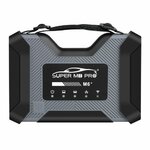
The M6+ consists of a significantly more compact and fully self-contained multiplexer that is literally a full computer in and of itself. It has a short "bootup" period, has an internal cooling fan, and is both Ethernet and WiFi-capable (and offering users the option of connecting to the host laptop/tablet via either type of connection).
The M6+ multiplexer has a large serial connector on one side that connects via the provided diagnostic cables (typically an OBD-II or for E500E owners, the 38-pin connector) to the car's diagnostic port. If you opt to connect the M6+ multiplexer to the host computer via wired Ethernet, this is done with a regular USB cable (such as is used to connect a printer to a desktop or laptop computer). This is MUCH better than the old serial connector of the Star C3 systems (although the Chinese Star C4 and C5 systems also offered wireless connection to the host computer, with varying levels of connection strength depending on the host laptop used).
M6+ buyers have the option to run the MB software associated with the M6+ either on a Windows 10-based laptop computer, or a Windows 10-based tablet computer. Because only a USB connection is needed (or WiFi), there are plethora of computers that can work for this. However, ChinaCarDiags.com offers laptop or tablet that come pre-configured with the MB software.
Here is a link to CCD's web page that shows all of their M6+ based systems:
 www.chinacardiags.com
www.chinacardiags.com
Here are direct links to several "typical" M6+ based systems that are currently for sale by ChinaCarDiags.com:
Separately, you can ALSO purchase a Chinese "clone" of the official MB C6 "VCI" multiplexer (by itself, or together with laptop, tablet, or software). One vendor selling these "Clone C6" systems, can be found here:
 www.obd2tool.com
www.obd2tool.com

This same vendor does, in fact, still sell C3 systems (as well as C4 and C5). If you want a C3 system, you can find it at the following link:
Comparison Table of MB Diagonstic Systems
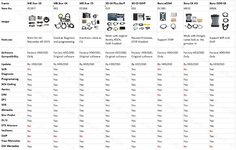
As you can see from the above table, the newest-generation diagnostic systems from MB do not support older cars. Thus, as an E500E or 400E420 owner, it is probably best to stick with a C3, C4 or Chinese-designed M6+ system (Not the C5 or C6 systems from MB or equivalent Chinese clones, just to be safe). Although, the chart does say that C5 systems do support the older cars. My recommendation is to use a C3 or C4 or M6+ multiplexer with HHT-Win software, to be safe.
The Super Star M6+ systems are the first time that the Chinese have materially departed from directly "cloning" (particularly externally / cosmetically) the MB multiplexers, and have struck out on their own with a multiplexer of their own design, yet of similar or even more functionality than the "real" MB multiplexers. By more functionality, I mean that the Chinese M6+ multiplexers are fully capable of and configurable for handling BMW diagnostics, the DoIP protocol (which the Star C4 and C5 systems could also handle), in addition to MB diagnostics.
So, that should provide an overview of the diagnostic computer situation, as well as current options, and such. Next posts will get more into connecting and using the M6+ system.
Super MB Star M6+ Diagram
Here is a diagram of the controls and indicators on the Super Star M6+ multiplexer:
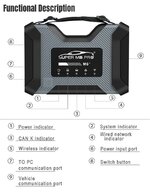
The following post shows an unboxing of the Super MB Pro M6+ system as received from ChinaCarDiags.
Introduction
As discussed in recent (December 2024) posts in the “Exploring the C3” thread, there is a relatively new generation of MB diagnostic system that has been created by the Chinese, called the "Super Star M6+." This new diagnostic system was introduced around the end of 2023, or in early 2024.
I recently purchased and took delivery of one of these Super Star M6+ systems, and will use this thread to explore it in depth as I learn it and get to know it -- both for my 1994 E500 and for my more modern 2007 W211 E63 AMG.
Background and Context
The Chinese Super Star M6+ system is the successor to the Star C3 and C4 systems that have been sold over the past 10-15 years. Available from about the 2008 or 2009 time period, the Star C3 system was the original "hacked" version of the MB Star C3 ("Compact version 3") DAS system, and was followed sometime around 2015 or so with the Star C4 system. Literally the Chinese made direct physical clones/copies of the factory MB "Star" system multiplexer, with questionable but functional internal multiplexer electronics, and utilized "hacked" versions of the MB DAS, Xentry, WIS, EPC and other related software loaded onto hard drives and later directly onto serial-port-equipped laptop computers.
Early C3 systems ran in a Windows XP-based virtual machine running on top of Windows XP. Later C3 versions and the Star C4 ran directly on Windows XP, eliminating the virtual machine and its significant performance penalty. They contained all of the key MB software that was needed, including HHT-Win, DAS, Xentry, StarFinder, MediaDB, StarUtilities, and so forth.
MB first introduced the Star C4 system in early 2012. The C4's multiplexer was called "SDConnect." The Star C4 was a modest improvement over the C3, mainly adding a wireless interface between the multiplexer and the host computer (also retaining wired connectivity if desired), eliminating at least SOME of the cumbersome cabling that tended to get in the way when out in the shop working underhood.
Both the C3 and C4 systems had their quirks in many respects, particularly in regard to the reliability of connections, component quality, cabling quality, and software compatibility. The C3 and C4 system generally required an old-school Windows laptop (running Windows XP) that had an old-school SERIAL port -- something that many many computers haven't had for many many years (generally replaced by USB). And the Chinese-made multiplexers often had a limited life, and were fairly clunky and large. For the most part, these systems worked, but sometimes required some work to get them to interface with cars correctly. Furthermore, the HHT-Win emulation software was sometimes eliminated from some Star C4 systems in recent years, limiting the usefulness of the system for 1990s and very early 2000s cars that performed diagnostics and live data provision through the 38-pin round connector.
The C3 systems were gradually squeezed out of production by the C4, and have been largely unavailable for the past 2-3 years (except as used systems). If you search enough, you can find a few vendors who are still selling new C3 systems. We have linked below to one such vendor. The C4 systems are generally applicable for MB models from 1996 through 2022, with a few chassis exceptions in the latter years. The C4 generally is more reliable than the C3, supports more languages, supports more vehicles, and more protocols.
More recently, MB has introduced the Star C5 and C6 systems, which are designed to handle more modern cars. The C5 (also called "SDConnect" by MB) is functionally very similar to the C4, but its multiplexer design is much more robust and reliable and less prone to overheating. However, the C4 remains in very very broad use by folks like us, independent shops, and so forth. However, like the C3 before it, it is disappearing and becoming less available on the market.
The Chinese "clone" C5 systems that are available, are literally just C4 multiplexer innards that are put into a "cloned" MB C5 outer multiplexer case, and are functionally no different than a C4.
The official MB Star C6 systems multiplexer is common called "Xentry Diagnosis VCI" by the company. You can see photos below of all generations of the official MB multiplexers, from the C3 through the C6.
Reference photos of MB Star multiplexers:
Star C3 multiplexer:

Star C4 ("SDConnect") multiplexer:

Star C5 ("SDConnect") multiplexer:

Star C6 multiplexer (aka "Xentry Diagnosis VCI"):


The Next Generation
This brings us to the advent of the Super Star M6+ systems, which have been introduced starting in very late 2023, and are well into replacing the Star C4 systems that have typically been sold by most Chinese vendors.
The Super Star M6+ system is a complete redesign and refactoring of the older-generation C3 and C4 systems. For the first time, the Chinese have not simply produced a clumsily aped / cloned external and somewhat functionally equivalent version of the MB Star Compact internals. They have actually engineered their own proprietary multiplexer, and taken it in some interesting new directions.
Example of a Chinese-made Super MB Star M6+ multiplexer:

The M6+ consists of a significantly more compact and fully self-contained multiplexer that is literally a full computer in and of itself. It has a short "bootup" period, has an internal cooling fan, and is both Ethernet and WiFi-capable (and offering users the option of connecting to the host laptop/tablet via either type of connection).
The M6+ multiplexer has a large serial connector on one side that connects via the provided diagnostic cables (typically an OBD-II or for E500E owners, the 38-pin connector) to the car's diagnostic port. If you opt to connect the M6+ multiplexer to the host computer via wired Ethernet, this is done with a regular USB cable (such as is used to connect a printer to a desktop or laptop computer). This is MUCH better than the old serial connector of the Star C3 systems (although the Chinese Star C4 and C5 systems also offered wireless connection to the host computer, with varying levels of connection strength depending on the host laptop used).
M6+ buyers have the option to run the MB software associated with the M6+ either on a Windows 10-based laptop computer, or a Windows 10-based tablet computer. Because only a USB connection is needed (or WiFi), there are plethora of computers that can work for this. However, ChinaCarDiags.com offers laptop or tablet that come pre-configured with the MB software.
Here is a link to CCD's web page that shows all of their M6+ based systems:
Search Result: Super MB Star M6+
Here are direct links to several "typical" M6+ based systems that are currently for sale by ChinaCarDiags.com:
- Full M6+ system with MB + BMW software & Panasonic tablet (list price $839)
- M6+ Multiplexer, cables and SSD with all software (list price $529)
- Full M6+ system with MB only software & Lenovo laptop (list price $729) ***I believe this is what @nocfn purchased
- M6+ multiplexer with cables only (list price $479)
- Full M6+ system with MB only software & Panasonic tablet (list price $779) ***this is what I purchased, and got discounted just above $700 with free shipping
Separately, you can ALSO purchase a Chinese "clone" of the official MB C6 "VCI" multiplexer (by itself, or together with laptop, tablet, or software). One vendor selling these "Clone C6" systems, can be found here:
Product search_C6_Auto Diagnostic Tool Wholesale From China

This same vendor does, in fact, still sell C3 systems (as well as C4 and C5). If you want a C3 system, you can find it at the following link:
Comparison Table of MB Diagonstic Systems

As you can see from the above table, the newest-generation diagnostic systems from MB do not support older cars. Thus, as an E500E or 400E420 owner, it is probably best to stick with a C3, C4 or Chinese-designed M6+ system (Not the C5 or C6 systems from MB or equivalent Chinese clones, just to be safe). Although, the chart does say that C5 systems do support the older cars. My recommendation is to use a C3 or C4 or M6+ multiplexer with HHT-Win software, to be safe.
The Super Star M6+ systems are the first time that the Chinese have materially departed from directly "cloning" (particularly externally / cosmetically) the MB multiplexers, and have struck out on their own with a multiplexer of their own design, yet of similar or even more functionality than the "real" MB multiplexers. By more functionality, I mean that the Chinese M6+ multiplexers are fully capable of and configurable for handling BMW diagnostics, the DoIP protocol (which the Star C4 and C5 systems could also handle), in addition to MB diagnostics.
So, that should provide an overview of the diagnostic computer situation, as well as current options, and such. Next posts will get more into connecting and using the M6+ system.
Super MB Star M6+ Diagram
Here is a diagram of the controls and indicators on the Super Star M6+ multiplexer:

The following post shows an unboxing of the Super MB Pro M6+ system as received from ChinaCarDiags.
Last edited:




